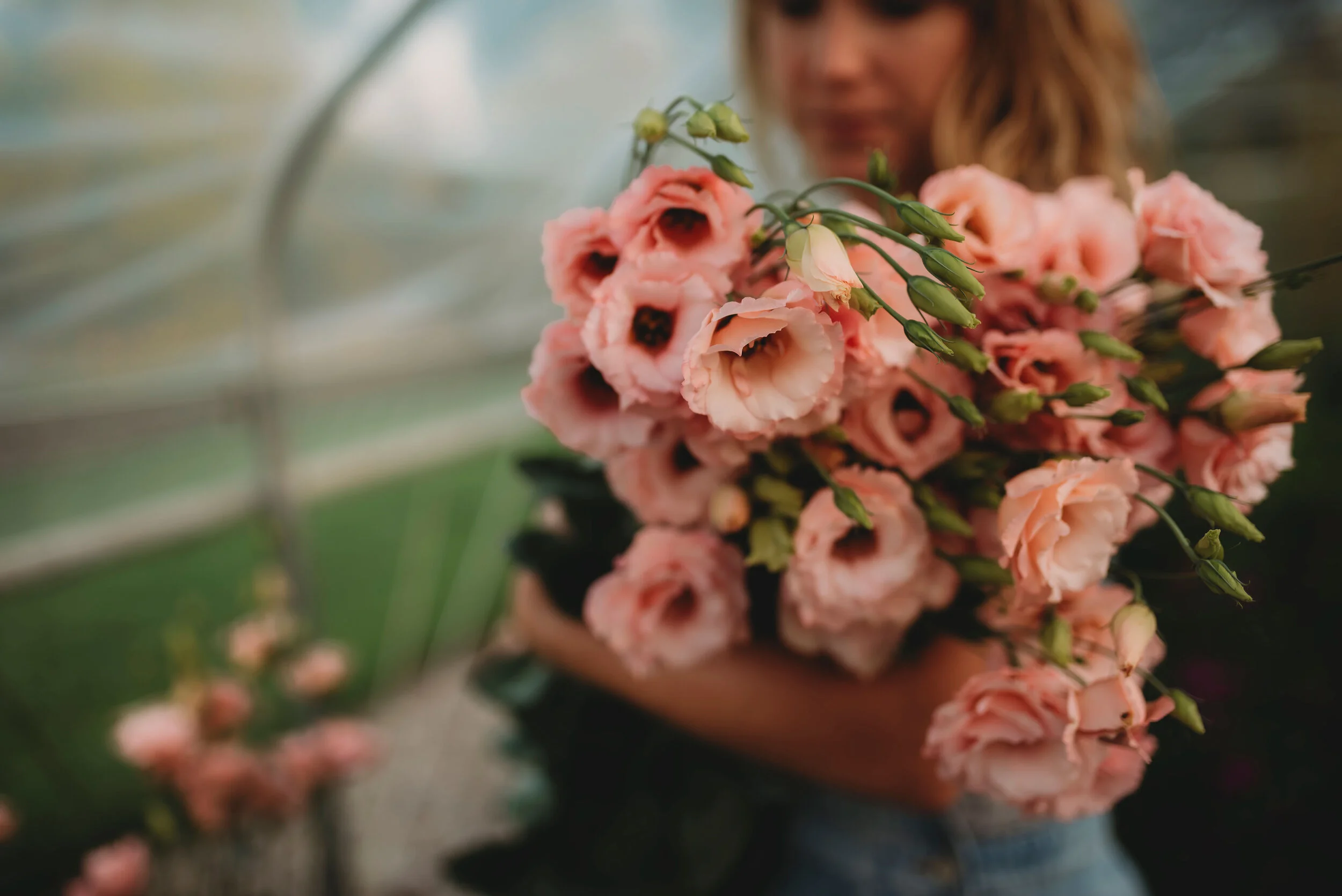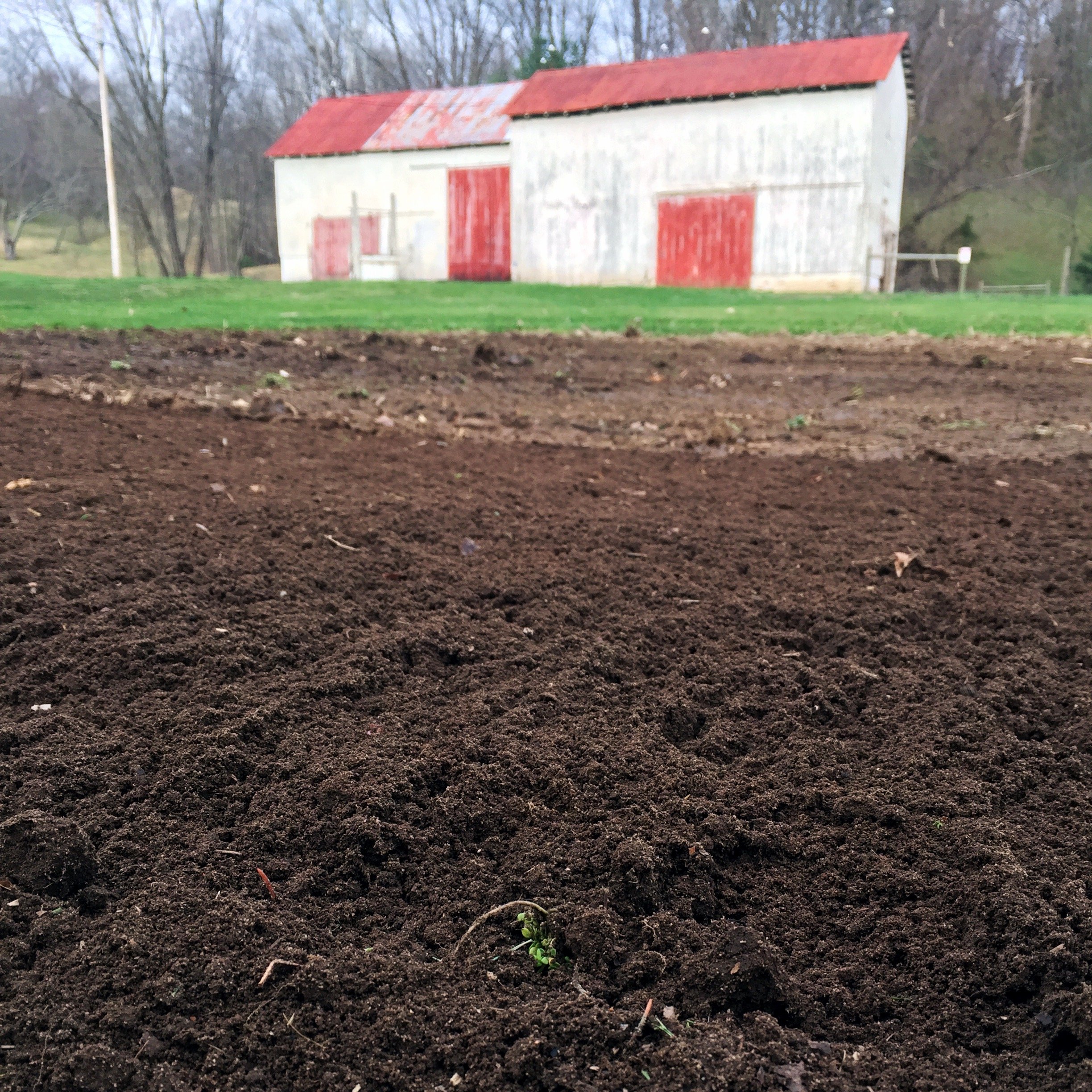How to Make Beautiful Compost
How to make beautiful compost
Feeding the soil not your plants.
There are certain things I just can't live without; water, cozy sweatpants, flowers, chicken wings, coffee...you get the point. Well, in the gardening world, compost is the thing your garden can't live without. Compost is the difference between a successful garden and one you give up on.
I repeatedly hear from people just like you that you can't grow anything; I have a brown thumb. I actually think what you have is crappy soil. In the horticulture industry, there is a saying that you feed the soil, not the plant, so when is the last time you fed your soil? (Quick side note, my computer wants to auto-correct soil to soul. It’s making me think, both are probably a valid question.)
Everyone reading this has some different variations of soil composition. For example, even on my farm, we have very different soil in our upper fields (sandy) vs. our lower fields (loamy). Why is this? For our farm layout, the lower fields are because of sediment and the way the upper fields drain into the bottom, and we are also on a river bottom. We manage both sections of our farm differently with the amount of compost and cover crop that we use. While the upper fields are sandy and a dream to plant and weed in, on the contrary, it's like feeding an elephant when it comes to keeping the soil hydrated and fed.
There are many variations of compost, and it depends greatly on the size of your garden and the soil condition you are trying to amend. It may be that you have a worm farm on your back porch where you put kitchen scraps. Yes, I actually know more than one person with a worm farm. Maybe your compost pile is a leaf and grass clipping pile behind a shed, or you are a composting pro with a whole system of rotating and layering. All of these are excellent forms of composting, but for now, I want to focus on the components of a basic compost pile so I can teach you how to make great compost to feed your soil and ultimately have better gardens and landscape beds.
There are two basic ingredients of compost, nitrogen, and carbon. For ease of remembering, nitrogen is green material, and carbon is brown. Nitrogen (green) can be grass clippings, fresh leaves, vegetable and fruit scraps, eggshells, and manure. Horse manure is especially rich in nitrogen. Carbon (brown) can be dead leaves, hay, straw, paper, cardboard, wood chips, and wood ashes in small amounts.
I made my first compost pile out of pallets that acted as walls. Of course, having a way to contain the compost is unnecessary, but I wanted to hide the pile because of its location.
Let's make some compost.
1. The bottom layer of your compost pile should be a good layer of carbon (brown). The base layer will help with drainage and prevent your compost from becoming waterlogged. A great bottom layer of carbon can be as simple as sticks from your yard because they are larger and allow good drainage.
2. Next, you guessed it, add a layer of nitrogen (green). You will continue to layer the pile until you run out of material.
3. The top layer of your pile should be carbon. This is because it kind of acts as a shield for the pile.
Every compost pile will be a little different, which is perfectly fine. If you want to dive all in on the compost game, there are gauges, thermometers, and all sorts of special equipment for making sure your compost is perfection. I have never used equipment to monitor the compost; I just leave it up to nature to do its thing. Yes, I have even doubled up my nitrogen layers, and I ended up with beautiful compost.
Compost piles are a work in progress and require more patience than skill, in my opinion, but here are a few things to pay attention to.
Aeration
Some people will tell you that you need to water and turn your compost regularly. Ultimately the only reason to do this is if you are in a hurry for your compost to be done or don't have your ratios right. If you have the right amount of loose, fluffy carbon such as dried grass clippings, hay, or straw, oxygen will be able to circulate through the pile. If you do feel you need to aerate your compost, try poking a rebar pole through it in several places. This lets air in without you having to turn the entire pile.
Water
Adding a carbon layer to the outside of the pile will prevent water from entering your compost and also from evaporating. Imagine it as a carbon raincoat. The ideal compost will be damp and spongy but not so wet that you can squeeze water out if you pick up a handful.
Nitrogen
The ideal ratio of carbon to nitrogen is 30 to 1, 30 dried leaves to 1 banana peel. Please don't count this out; it's just for a visual reference. You want thick layers of browns and thin layers of greens. If your compost has too much nitrogen, it will be slimy and heavy, simply add more carbon.
Carbon
A pile with too much carbon will be dry and not break down. Just add more nitrogen-rich ingredients. You can also add soil if you want to bulk up to your pile and are struggling to find ingredients.
You can build your pile over weeks, months, or even years. The time it takes for your compost to be ready will vary, but a typical goal is about six months from when you stop adding to it. If you add smaller particles of material to your pile, it will be done sooner, and if you use larger pieces, it will take longer to break down. If you are not going to use the compost as soon as it is ready, it is a good idea to cover it with a thick layer of carbon or a tarp to prevent the nutrients from leaching out in the rain.
Here are a few things you should not add to your compost:
Walnut leaves - black walnut trees contain a chemical, juglone, that can have a devastating impact on the roots of other plants. I have read sources that say you can compost them because the juglone breaks down when exposed to water, air, and bacteria in about 3-4 weeks.
Plants that have gone to seed - plants that have gone to seed will spread in your compost pile.
Dairy or animal byproducts - meat, fish, egg, dairy, and poultry products breed bacteria, cause odor problems, and result in pests.
Charcoal ash - Charcoal tends to have chemical additives that leave residue in the compost.
Treated wood - Like charcoal ash, treated wood is known to leach arsenic into the soil.
Pesticide treated plant material.
Diseased plants - Typically, the compost pile will not get hot enough to kill off the diseased organisms.
Don’t forget my favorite rule, Gardening is just one experiment after another. Have fun trying something new and I would love to hear your tips and success stories.
Let’s get growing,





